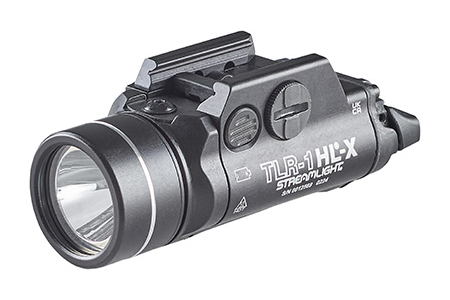Data centres demand a unique perspective on fire prevention
Data centres and server farms are a vital part of the modern landscape. Their importance to modern society is reflected in the commensurate level of investment being made to ensure they stay up and running 24/7
Ask anyone which commodity is the most valuable in the modern business environment and most will respond with "data". The investment in data gathering, cleaning and storing followed by dissemination via comprehensive global communications networks is truly vast, with billions being spent around the world to build up personal and corporate profiles and histories in order to tailor business transactions and advertising down to an almost individual, personal level.
One look at the money companies like Google, Apple and Microsoft pour into data gathering activities and you will be left in no doubt that knowing the ins and outs of every person on the planet must be the ultimate aim. Even if you are ‘Big Brother’ averse, you will not have escaped the eye of some form of data-gathering exercise.
What most people don’t see is what goes on behind the scenes. Server farms, data centres and telecoms hubs can occupy hundreds of thousands of square feet of real estate, with racks upon racks of servers and communications modules catering to the demands of the modern consumer and business environment. To illustrate the scale and complexity of such an installation, Google recently threw the doors open on one of its many worldwide locations. It simply has to be seen to be believed.
With their value skyrocketing everyday and Internet Service Providers (ISPs) promising 99.99% uptime, the integrity of these installations is paramount. One of the biggest hurdles is the heating, ventilation and air conditioning (HVAC) environmental control – coping with the staggering amount of heat that is generated by thousands of server racks or exchange points. The second is fire protection, both passive and reactive. These are not ordinary buildings and, as such they demand a rather unique way of dealing with fire issues.
The problem with heavy-demand HVAC solutions is that unobstructed airflow is essential for their optimal operation. This immediately creates issues from a fire-containment perspective as it leaves clear paths through which fires can propagate. This is dealt with to a certain degree automatic-duct-closure systems and by one of the primary approaches to passive fire protection – compartmentalisation. By segregating servers into sub groups and keeping them separate from others, fire containment becomes a lot simpler. It also makes sense from a computing perspective where back-up servers should be isolated and remote relative to each other. Complementing the architectural segregation many sever cabinets have built in fire resistance, or at the very least solutions to help fires propagating too far too quickly. Where the cable runs and other interconnecting or structural elements are concerned, architects often specify intumescent or vermiculite fire protection. Vermiculite fire protection is where structural elements are covered very thick layers of protective materials, although a cheap option it is not all that pleasant to look at so tends to be hidden away – especially in instances where cleanliness and flowing lines are the order of the day such as what we can see in the Google server farms.
Intumescent fireproofing normally comprises a layer of paint, which is applied along onto structural members in coating thicknesses that are commensurate with the cross section and perimeter of the item being coated. Because of their relatively low thickness, appealing finish and corrosion protection capabilities, intumescent coatings are often preferred in terms of both performance and aesthetics, although not generally in terms of price. Passive fire protection appears in multiple other guises, but in most instances it is the ruggedising of structural elements in order to reduce the risk of fire or, at the very least, slow or even prevent it spreading any further.
Should the worst happen, we quickly dive into the world of active fire-fighting solutions. Like any other industrial installation, fire detection and suppression is key; and in many instances the fire detection technology is very similar to what you would see anywhere else, although in some case it may be tuned to adapt to higher operating temperatures. Fire suppression is when it becomes awkward… rather than accepting asset damage as an unfortunate side effect of fire fighting, the solutions demanded by data centres often lead to highly advanced techniques and materials that although costly compared to more general fire suppression approaches, can do the job with negligible damage to the assets being protected.
One of the most effective ways to fight fires is through the use of gaseous systems, which deploy proprietary materials specially developed to extinguish flames and sources of ignition. One of the most well known solutions is Novec 1230 Fire Protection Fluid from 3M. A proprietary technology form 3M, Novec is a fluoroketone that works as a gas upon discharge, yet it is a liquid at room temperature. It can be used for total flooding applications in engineered and pre-engineered systems and is ideal for environments such as switching centres, computer rooms, control rooms and data centres where uninterrupted operation is critical. In addition to its impressive fire-fighting capabilities, Novec 1230 fluid also offers zero ozone depletion potential, a five-day atmospheric lifetime and a global warming potential of just 1 – an environmental profile that hydrofluorocarbons (HFCs) and other halocarbon agents can’t begin to match. Because of this, Novec 1230 fluid – unlike HFCs – is not targeted for phase-down or regulatory restrictions anywhere in the world, making it today’s sustainable choice for clean agent fire protection.
Gaseous systems can also be used to prevent fires. Hypoxic air fire prevention systems can be deployed to permanently reduce the oxygen concentration inside buildings or sub sections. They are installed to actually prevent both ignition and spreading. Although they are the ultimate in fire prevention they do have a downside in that operators rely on the oxygen that they replace – leading to the need for breathing apparatus or removal and refilling.
With a rather unique set of demands, these types of installation do require some specialist solutions. However, like all technology, as data centres become more common place the technology that forms their anti-fire solutions may well come down in price – this means that everyone can take advantage of the best the industry has to offer.











